Tomonobu Itagaki named it Itagaki Games, and he is open for a possible future Microsoft acquisition.
Regarding the new studio, Itagaki confirmed its existence on Facebook, where he also published an interview that was left out of Bloomberg’s article that celebrated the 20th anniversary of Xbox. As the interview was too long, it was omitted, but the publication permitted Itagaki to publish it.
How did Itagaki meet with Microsoft first? „The timing was immediately after that prototype of Xbox was complete. I think it was about 13 months before the product launch, and that was when Microsoft began talking to Japanese studios, and Tecmo was one of them. Microsoft wanted to meet me, probably they believed I would be able to prepare a game that maximizes the machine’s full capabilities,” he said, confirming that 13 months to make the game (which is Dead or Alive 3) was a challenge: „I was so used to such things. I am a developer but also a commander, so when I decide to do it, I do it. There’s no meaning not to have a game ready on Day 1 otherwise you can’t help Xbox make the first wave. I took it as a mission to complete the job in 13 months. I thus poured resources to make it happen.”
What were his first thoughts when he heard about Microsoft coming to the industry? „I welcomed it. Microsoft is a computer company after all, and back then, a lot of companies were making hardware… NEC, Sega, and so on. you know, more hardware, it’s better. My image on Microsoft was an OS company, so I was interested in knowing their thoughts on the hardware and the industry,” Itagaki said. His first encounter with Seamus Blackley (the Xbox’ designer) was somewhat funny: „I was waiting at a reception room, then he walked in, all by himself. We exchanged business cards, but he barely looked mine, rather put it aside quickly, plumped down on a couch, then he was like, we are making a game console, are you joining or not. you know, he’s big and was like a marine soldier. Then we talked about a lot of things, like the horsepower of the machine, other technical specifications, launch date, planned instalment base at the launch. All verbal, no papers at all. We talked for an hour or so, and my mind was set. My team’s mission was to create the world’s best fighting game, and we needed the Xbox for that. Xbox was four times to six times more powerful than the PS2, and yes, we were on.
I met a lot of people, and you know, you get a good sense of that person if you meet in person. You spend one hour, and by the time you get a good sense of what that person is saying is true or not. As for Seamus, to every question I had, he answered very clearly. Not just machine specifications and dates, but things like, what would you do if this kind of trouble occurs. He was very clear and solid, and even if he couldn’t answer me right away, he promised he would get back to me immediately after he’s back in the U.S. and check with his teams, and he did. he was very solid. I am that kind of person as well, so we got along very well quickly.”
He shared a few stories with him, too: „It was two weeks before Dead or Alive 3’s master is up. Seamus called me suddenly, like he did all the time, and said, I got machineguns on both of my hands and I will go and attack Nvidia right now, you coming with me. I was like wait, what’s going on, I have no time for that as I’m busy finishing up Dead or Alive 3, what happened. Then he said. Nvidia promised me that the GPU they provide us will be at 250MHz, but just called me and said there would be a 10 per cent reduction from that. That’s not what we’ve agreed on, so I am getting into Nvidia, are you with me or not. Then I was like, calm down Seamus, think what we need is to make sure games work at 225MHz. then he was like, yeah you right, ok, please do your part to make the game run at 225MHz, leave Nvidia up to me. This is typical Seamus. If you were just being apologized and said, sorry, GPU’s clock is going to be 10 per cent lower, nothing is exciting and fun. but he’s good at making a fuss about and put people on his pace, and when you realize, he makes other people work for him to let him accomplish what he wanted to do. He’s good at it. Oh, I complained Xbox’s first controller is bad. Button was tiny, the response wasn’t good–you know, the button doesn’t return to the original position once pressed, and that’s a big headache for us because you can’t mash buttons. Seamus was initially not with me and said the controller was great, so I just passed it on him and ask to hold it and mash a button. Since his hands are also big but buttons are small, he had trouble doing mash too. See? I told you! It was like that. Ah, I also complained the console itself is too big. The console is too big and the cable is too long. I guess that’s a fit to an American house, but for Japanese homes, it was weird,” Itagaki added.
He talked about how it was a daring move to bring Dead or Alive to a new console as an exclusive launch title: „You know, everything got a risk or two, but you can minimize it by managing them right. As for Dead or Alive 3, I was so sure we can make this a big success if we manage risks right. with this machine, and with this passionate guy sitting in front of me, and that Microsoft is saying it would do its best, after all, I had no doubt.” And he defended Microsoft, as he blamed some Japanese developers: „Well, an attitude toward how to build hardware was different from Nintendo and Sony. Nintendo and Sony were both making hardware on their unique chips and unique architecture. Microsoft, on the other hand, didn’t spend time and budget but rather assembled existing components, but made the best possible one out of these components. That made some Japanese game companies an impression that Xbox was just a version of PC. Nintendo is still pursuing its way and has made a big success on it, so you can’t underestimate that. But as for Sony, they have changed the way and doing a thing like Microsoft was doing from the beginning. I hope Xbox and PlayStation continue to have a good competitive relationship and I wish both to be successful.
If there were such attitude by Microsoft, it was Japanese developers’ attitude that made Microsoft act that way. I am a very machine-oriented guy, but many other Japanese developers are business-oriented. Even before Microsoft has a chance to explain their machines, Japanese studios would ask them, what’s the benefit for us and what you can do to us. I don’t think anyone would be happy to be given that sort of attitude from the beginning.”
He also said that working with Xbox was fairly good: „You know, Seamus likes to make a fuss just on anything. He e-mailed me, called me, once every week and asked what’s going on, are you ok, do you need any help, if you need anything do reach me out, that sort. On one occasion, he called me and asked what’s going on, and I was like well it’s just been a week we talked last, no big progress is made since then. So he said, okay I am coming to your office at the end of this month, and I was, you can come, but there’s not much I can show you by then. He, ok, then I would be able to see something, I replied maybe three months later. He then I would check back then, the call was ended, but only a month later, I get a call from him again and he said what’s going on. But on every note he made to me, at the end was always a line saying do reach out to me if any troubles, I am here to solve your troubles. He was very true to the pledge. One example was he put Dead or Alive 3 on a fast track in terms of the approval process. You know, some platform holders make the process slow by complaining about a tiny thing that no one would care about, but as of Microsoft and Seamus, there was no such thing. All the main Xbox team, including Seamus Blackley, Ed Fries, Kevin Bachus, their leader Robbie Bach and George Peckham who often played golf with me, provided me full support on me. I visited Redmond once every two months, and they introduced me a lot of tools and support that would help speed up game development.”
However, he doesn’t think that Microsoft understood the Japanese approach to game development: „I can’t speak on behalf of all the Japanese studios, but my team’s approach was different from Bungie. Seamus let me see Halo twice while the game was still in development, saying this is super confidential. I was worried about Halo back then because its frame rate was very low. I told Seamus that the Halo game was worrisome, are you sure that is going to ok, and Seamus was like it’s fine so you do your part. Halo ended up a very great game, so how to land a game was very different from my style to Bungie’s style. Did Seamus show understanding of my style? Well, he didn’t care much about the process. outcome, outcome, outcome. That’s all he asked. Are you OK, what’s coming, you need any help–that’s the loop we walked through continuously, and that’s how we made the Dead or Alive 3.”
What was his impression that a U.S. company is coming into the industry largely occupied by Japanese companies? „Very welcome and very natural thing to happen. This is an analogy, but a game console is a fighter jet. Every fighter got a unique aspect, like, this is very fast but can’t load up many missiles. Software companies like us can’t build a fighter jet on our own, but we have a choice from many available, and you make a decision based on things like specification and support budget they provide us. What if there’s only one jet available in the world? That’s very bad because you can’t negotiate. So it was very welcoming, and the Xbox was designed to be more powerful than the PS2 and machine was hitting the market soon, so I had no other options but to bet on.”
Was he happy with Dead or Alive 3’s sales? Itagaki revealed that Microsoft messed up the Japanese launch of the Xbox, causing it to flop in its future generations, too: „We sold more than 2 million copies of the game worldwide, which was a lot better than the company’s projection, so was a big success. But it came with one big problem: Japan. Microsoft first told us they will prepare 500,000 units of the console at the launch, so our sales team piled up orders for 262,000 copies from retailers. I still remember these figures clearly. And then, soon before the launch, Microsoft Japan apologized and said they were only able to secure 250,000 units. Wait a second, that’s fewer than the planned dispatch copies of Dead or Alive 3. There was nothing we can do by that time, and the launch date had come. Xbox console itself got sold out quickly for sure, but not every gamer that purchased the Xbox likes a fighting game. I think Dead or Alive 3 in Japan sold 170,000 to 180,000 copies. Then retailers get some leftover, and they just want to clear inventories quickly because it was a busy season for them. What happened was Dead or Alive 3 went into a wagon from the shelf and marked down to as low as 300 yen ($3), just a month after the release. The game got an unfair reputation and called “a $3 game,” and I was so sad about it. You know, when gamers see a cheap game in a wagon, they tend to judge it’s a terrible game. It was frustrating and sad. And that promoted other software companies unwilling to publish games on Xbox. Look, Dead or Alive 3, which bet on Xbox, is now sold only for $3. Japanese game companies tend to be more passive and want to see how the first penguin would perform, rather than they being first to jump off. So they moved away, and since seeing not many games from Japanese companies, Japanese game fans also faded away. If Microsoft was able to prepare 500,000 units at the launch as they promised, the thing could be much different and Xbox might have gained a whole different market position in Japan. That was a real watershed for Xbox in Japan. I have to say the first Xbox’s launch in Japan was a massive failure.”
What was Itagaki doing in the past few years? „For the past four years, I’ve been teaching to foster juniors, but now I feel like I want to make a game again and just established a company for that purpose.” And he suspects that Xbox fans are waiting for his new work: „You can count on me for that. Otherwise, I wouldn’t have accepted an interview for this Xbox article.” Finally, he didn’t rule out that Microsoft could acquire his studio in the future: „I would start again with questions that I made to Seamus two decades ago. Back then, I asked him, are you confident that you will beat PS2? He said yes. Xbox is called ‘Project Midway’ and I’ll gain the supremacy with it. That’s why I trusted him and created Xbox-exclusive games for about 10 years. 20 years have passed since then, and I established my own company, Itagaki Games, which is not Tecmo, nor Valhalla. I know Microsoft is still aggressive. If they reach out to me, it will be an honour for me.”
The Japanese rockstar is back.
Source: Gematsu

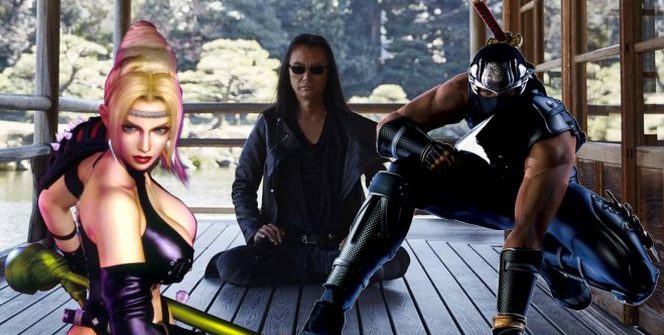

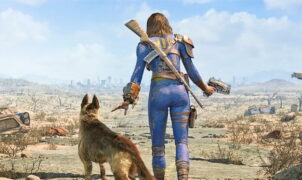


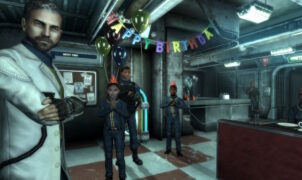

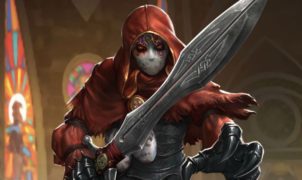

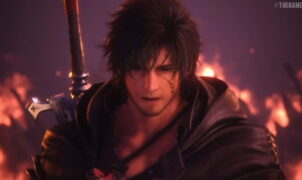


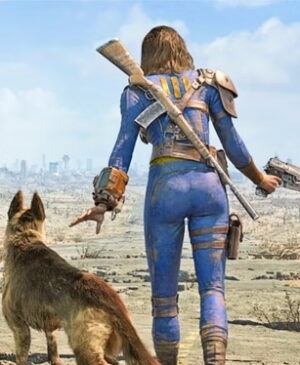
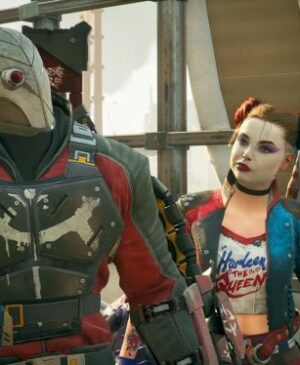
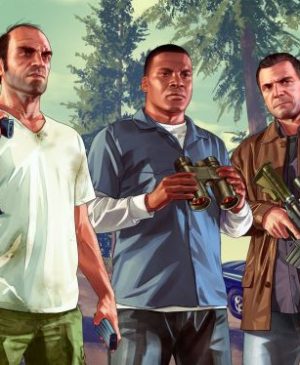
Leave a Reply